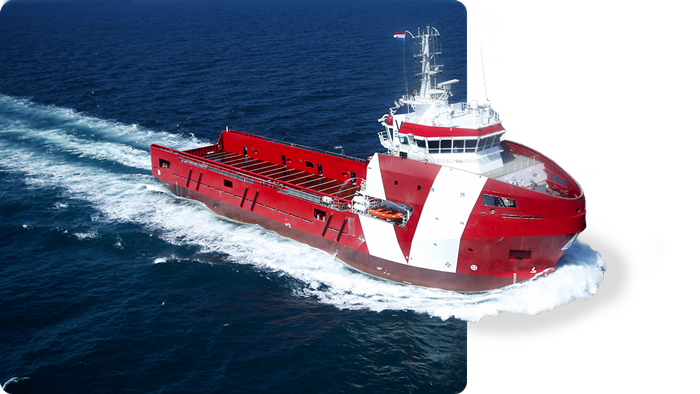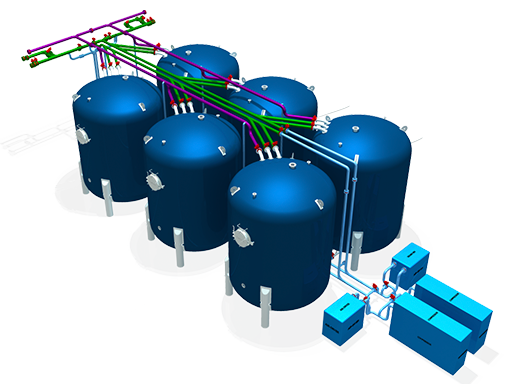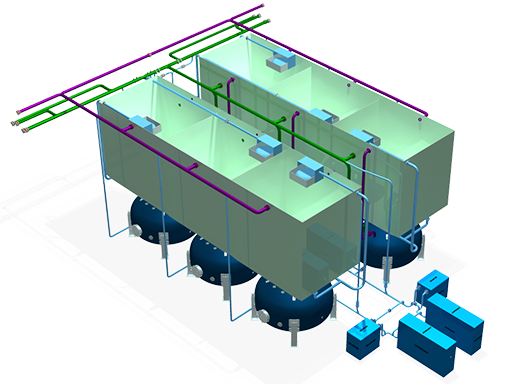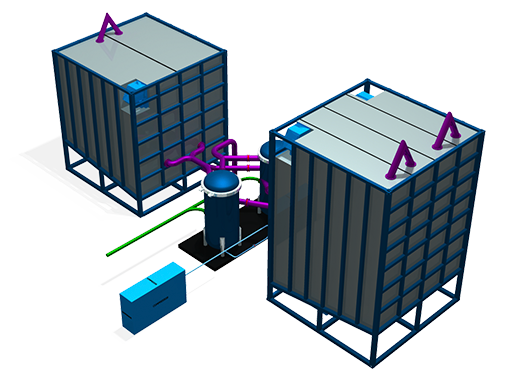Offshore vessels
Offshore vessels

offshore support vessels
Bulk handling systems (BHS) are crucial for offshore support vessels (OSV) to perform their supply function. The main task of the BHS is to receive, store and discharge dry material. In conventional systems, the storage and discharge of dry material are performed by pressure bulk tanks. Dry bulk cargo, such as Cement, Barite or Bentonite, is fluidised in the tanks by compressed air, then discharged to the offshore rig tanks via the pipes and hoses using the airflow from the compressor.
Lion offers several configurations of this Bulk handling System to comply with our customer’s requirements.
The following configurations are available for offshore vessels:
Click on a blue link to jump to your preferred section.
Dry Bulk Management
> Pressure Tank System
> Sender Tank System
> Re-Loader Tank System
System Configurations

pRessure tank system
The pressure tank or P-tank system is a conventional system used on Offshore Vessels. The system deploys several pressure tanks to receive, store and discharge cement and drilling powders on board. Dry bulk cargo is fluidized in the tanks by compressed air, then discharged via the pipes and hoses to the rig tanks. The bulk material is loaded and unloaded pneumatically, using compressed air to convey the powder.
KEY BENEFITS
-
High system reliability
-
Option to use weight monitoring system
-
Easy operation, using various degrees of automation
-
Multiple independent systems possible, prevents contamination
-
Arranged with 4-10 tanks
TECHNICAL DETAILS
Max. Cargo Capacity: Up to 500 T
Max. Convey Capacity: Up to 115 TPH
Up to 500 T
Max. Convey Capacity:
Up to 115 TPH

Sender tank system
The sender tank system is a bulk handling system using several atmospheric, hull-integrated hoppers to transport cement and drilling powders from shore to offshore destinations. Material is loaded pneumatically from shore. Small pressure tanks underneath the hoppers are filled and pressurised for unloading to a rig to pneumatically convey the bulk material through the pipe and hose routing.
KEY BENEFITS
-
Hull-integrated storage tanks
-
Highly reliable pneumatic system
-
High volume, small footprint
-
Continuous bulk flow in dual mode
-
High energy efficiency
-
Various degrees of automation
-
Small pressure tanks, less risks
TECHNICAL DETAILS
Max. Cargo Capacity: Up to 500 T
Max. Convey Capacity: Up to 115 TPH
Up to 500 T
Max. Convey Capacity:
Up to 115 TPH

Re-loader tank system
The re-loader or double re-loader tank systems are used to store dry bulk material onboard offshore vessels. The system uses several atmospheric hoppers to store cement and drilling powders. The material enters a re-loader tank, which is then pressurised to convey the powder towards the rig tanks pneumatically. Vacuum is used to remove material from the hoppers.
KEY BENEFITS
-
Hull-integrated storage tanks or freestanding modular design deck tanks
-
Proven pneumatic system
-
Maximum volume and minimum footprint
-
Fully automated
-
Only two pressure tanks needed, smaller risks
-
Vacuum-Pressure System
TECHNICAL DETAILS
Max. Cargo Capacity: Up to 2.000 T
Max. Convey Capacity: Up to 115 TPH
Max. Cargo Capacity:
Up to 2.000 T
Max. Convey Capacity:
Up to 115 TPH


